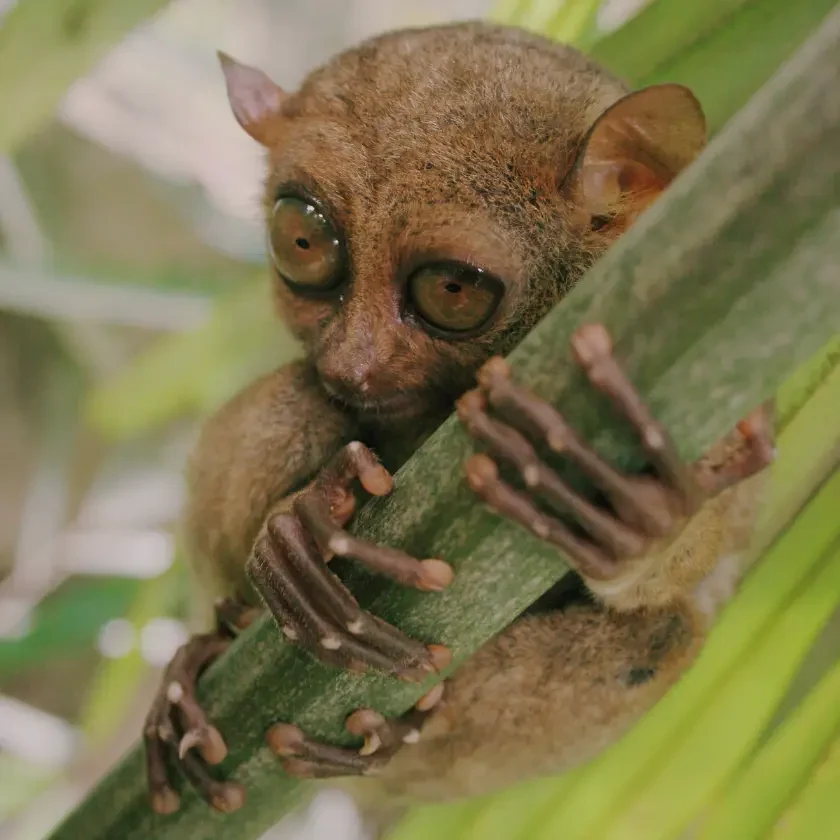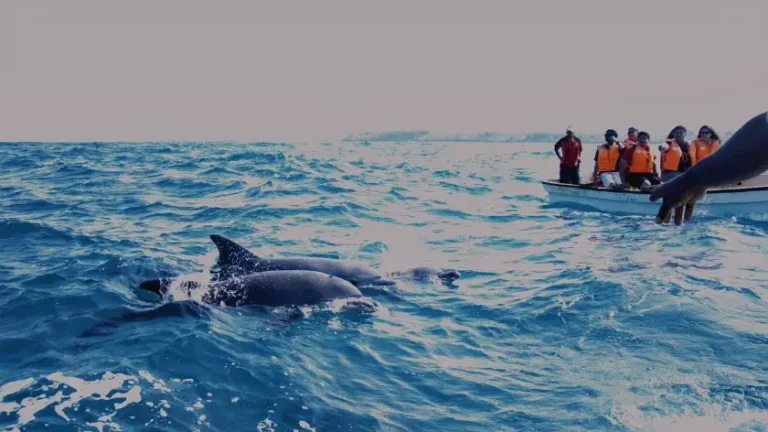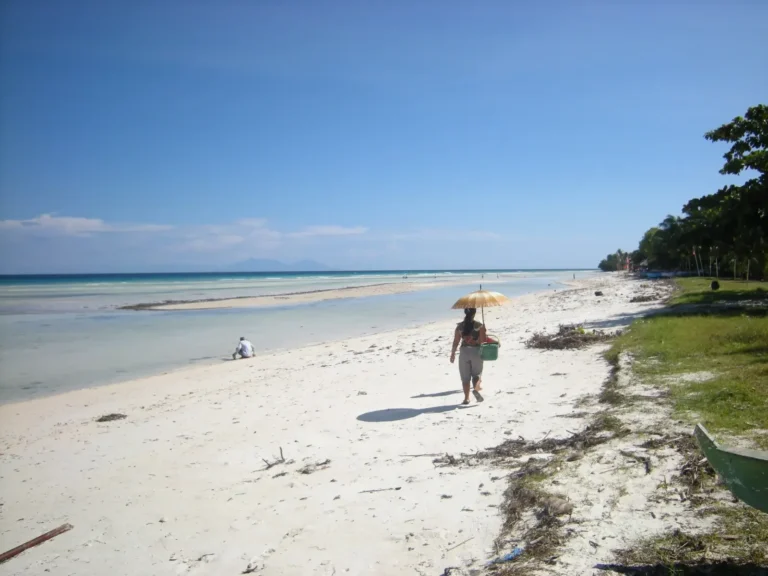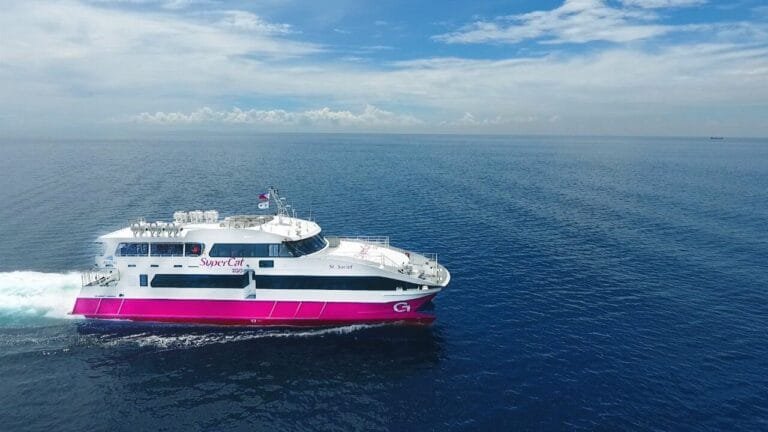Bohol Wildlife & Ecotourism Guide: Wildlife Viewing Equipment
Wildlife Viewing Equipment enhances observation opportunities while ensuring comfort and safety during Bohol ecotourism adventures across diverse habitats from dense forests to open marine environments.
Essential Gear:
- Binoculars: 8×42 or 10×42 for optimal wildlife viewing
- Camera equipment: Telephoto lens (300mm+) for wildlife photography
- Field guides: Birds of the Philippines and marine life identification books
- Waterproof bags: Protection for electronics during boat trips
- Headlamp: Red-light option for night tours without disturbing animals
- Notebook: Waterproof paper for recording observations
Clothing Recommendations:
- Earth-tone colors: Avoid bright colors that might disturb wildlife
- Long-sleeved shirts: Protection from insects and sun exposure
- Quick-dry pants: Comfortable for multiple environments
- Sturdy hiking boots: Ankle support for forest trails
- Water shoes: For marine activities and mangrove walks
- Rain gear: Lightweight poncho for tropical weather
Health and Safety Preparation:
- Insect repellent: DEET-based for tropical conditions
- Sunscreen: Reef-safe formulations for marine areas
- First aid kit: Basic supplies for outdoor activities
- Water purification: Tablets or portable filters
- Motion sickness medication: For boat-based wildlife tours
- Personal medications: Sufficient supply for entire trip
Working with Local Guides and Operators
Certified Nature Guides provide essential expertise for successful wildlife encounters while ensuring visitor safety and adherence to conservation protocols that protect Bohol’s sensitive ecosystems.
Guide Certification Levels:
- Basic nature guides: General wildlife knowledge (₱800-₱1,200 per day)
- Specialist guides: Expert in specific taxa or habitats (₱1,500-₱2,500 per day)
- Research assistants: Scientific training and data collection (₱2,000-₱3,500 per day)
- Master naturalists: Decades of experience and advanced knowledge (₱3,000-₱5,000 per day)
Operator Selection Criteria:
- Conservation certification: Membership in sustainable tourism organizations
- Local community support: Employment of local guides and staff
- Environmental practices: Waste management and resource conservation
- Safety protocols: Insurance coverage and emergency procedures
- Educational focus: Commitment to conservation awareness
Booking Considerations:
- Advance reservations: Popular programs fill quickly during peak season
- Group size preferences: Smaller groups for better wildlife viewing
- Flexibility: Weather-dependent activities may require schedule changes
- Language needs: English-speaking guides available but limited
- Special interests: Specialized tours for photography, research, or specific species
Accommodation Options for Wildlife Enthusiasts
Eco-Friendly Accommodations near wildlife areas provide convenient access to nature while supporting conservation through sustainable practices and community employment.
Nature Lodge Options:
- Nuts Huts Resort: Eco-cabins near Chocolate Hills (₱3,000-₱5,500 per night)
- Bohol Bee Farm: Organic resort supporting local agriculture (₱4,500-₱8,000 per night)
- Peacock Garden: Jungle setting near tarsier sanctuary (₱2,500-₱4,200 per night)
- Amarela Resort: Beachfront with marine conservation programs (₱6,000-₱12,000 per night)
Community Homestays:
- Conservation family homestays: ₱800-₱1,500 per night including meals
- Research station accommodation: ₱1,200-₱2,000 per night with basic facilities
- Village tourism programs: ₱600-₱1,200 per night with cultural activities
- Organic farm stays: ₱1,000-₱1,800 per night with agricultural experiences
Camping and Field Stations:
- Research camp accommodation: ₱500-₱1,000 per night in dormitory settings
- Organized camping tours: ₱800-₱1,500 per night including equipment
- Beach camping: ₱400-₱800 per night on designated conservation beaches
- Forest camping: ₱600-₱1,200 per night in protected areas with permits
Book eco-friendly accommodations through our trusted partners to ensure your stay supports Bohol wildlife conservation while providing comfortable base camps for your adventures!
Food and Dining in Conservation Context
Sustainable Dining and Local Cuisine
Sustainable Food Choices during Bohol wildlife tours support local communities and conservation efforts while introducing visitors to traditional Filipino cuisine that reflects the island’s natural abundance.
Conservation-Supporting Restaurants:
- Organic farm-to-table establishments: Direct support for sustainable agriculture
- Community-managed seafood restaurants: Sustainable fishing practices
- Traditional cooking classes: Learning indigenous food preparation
- Conservation organization cafeterias: Proceeds supporting wildlife protection
- Local market dining: Supporting small-scale producers and traditional cuisine
Eco-Friendly Food Practices:
- Seasonal menus: Utilizing locally available ingredients
- Sustainable seafood: Only from well-managed fisheries and sanctuaries
- Organic vegetables: Pesticide-free farming protecting watershed areas
- Traditional preparation: Indigenous cooking methods and recipes
- Minimal waste: Locally-sourced ingredients reducing transportation impact
Traditional Bohol Specialties:
- Fresh seafood: Daily catches from sustainable fishing operations
- Organic rice: Traditional varieties grown without chemicals
- Tropical fruits: Native species supporting local biodiversity
- Root vegetables: Traditional crops adapted to local conditions
- Coconut products: Multiple uses from sustainably managed plantations
Supporting Local Food Systems
Local Food Networks provide income for rural communities while maintaining traditional agricultural practices that support wildlife habitat and biodiversity conservation.
Community Supported Agriculture:
- Organic vegetable cooperatives: 25+ farmer groups using sustainable methods
- Traditional rice varieties: Heirloom strains preserving genetic diversity
- Fruit tree plantations: Native species providing wildlife food sources
- Herb and spice gardens: Traditional medicinal and culinary plants
- Sustainable livestock: Free-range chickens and goats with minimal environmental impact
Market Integration:
- Local market visits: Educational tours of traditional food systems
- Cooking workshops: Learning sustainable food preparation
- Agricultural tours: Visiting organic farms and sustainable operations
- Traditional preservation: Learning indigenous food storage methods
- Seed conservation: Supporting heirloom variety preservation
“When visitors choose local, sustainable food, they support the communities that protect our forests, reefs, and wildlife. Every meal becomes an act of conservation.” – Roberto Flores, Sustainable Agriculture Coordinator
Photography and Documentation Ethics
Wildlife Photography Guidelines
Responsible Wildlife Photography captures the beauty of Bohol’s biodiversity while following strict ethical guidelines that prioritize animal welfare and habitat protection over getting the perfect shot.
Photography Ethics:
- Animal welfare first: Never compromise animal safety for photographs
- Natural behavior: Don’t alter animal behavior through baiting or harassment
- Respectful distance: Use telephoto lenses rather than approaching closely
- No flash photography: Especially critical for nocturnal species like tarsiers
- Nest protection: Extra caution during breeding seasons
- Habitat preservation: Stay on designated trails and viewing areas
Technical Considerations:
- Equipment recommendations: 300-600mm telephoto lenses for wildlife
- Camera settings: High ISO capability for low-light forest conditions
- Weather protection: Tropical-rated gear for humid conditions
- Battery life: Extended power for long field sessions
- Memory cards: Sufficient storage for multiple days of shooting
- Backup equipment: Redundancy for critical photography expeditions
Best Photography Locations:
- Tarsier Sanctuary: Strict no-flash policy, designated viewing areas only
- Marine sanctuaries: Underwater photography with proper certification
- Bird watching sites: Early morning golden hour opportunities
- Mangrove boardwalks: Safe access for coastal wildlife photography
- Research stations: Opportunities for scientific documentation
Year-Round Wildlife Calendar
Monthly Wildlife Highlights
Seasonal Wildlife Activity varies throughout the year, with distinct patterns for different species groups that inform optimal timing for various ecotourism experiences.
January-February:
- Peak dry season: Ideal conditions for all outdoor activities
- Tarsier activity: Cool temperatures increase daytime movement
- Marine visibility: Excellent conditions for diving and snorkeling
- Migratory birds: Winter visitors at peak abundance
- Research season: Prime time for scientific studies and citizen science
March-April:
- Breeding season: Many bird species in peak reproductive condition
- Coral spawning: Synchronized reproduction events in marine sanctuaries
- Butterfly emergence: Peak diversity of endemic butterfly species
- Flowering trees: Spectacular blooms attracting pollinators
- Cave exploration: Optimal conditions for spelunking activities
May-June:
- Transition period: Weather changes creating increased animal activity
- Sea turtle nesting: Beginning of nesting season for multiple species
- Fruit season: Peak availability of native fruits supporting wildlife
- Research opportunities: Long-term studies continuing year-round
- Photography season: Lush green landscapes after first rains
July-August:
- Peak nesting: Sea turtles, seabirds, and forest birds breeding
- Juvenile wildlife: Young animals visible with parents
- Mangrove productivity: Peak season for mangrove ecosystem activity
- Rainy season tours: Unique experiences in lush, wet environments
- Cultural festivals: Traditional celebrations often coinciding with wildlife events
September-October:
- Migration arrivals: Return of migratory species from northern regions
- Fruit bat activity: Peak season for large fruit bat colonies
- Marine reproduction: Many fish species in breeding condition
- Typhoon season: Weather considerations for outdoor activities
- Research data collection: End-of-year monitoring and assessment
November-December:
- Return to dry season: Improving weather for tourism activities
- Peak tourist season beginning: Increased demand for wildlife tours
- Bird diversity peak: Resident and migratory species overlap
- Marine mammals: Increased activity as waters calm
- Year-end research: Final data collection and analysis periods
Special Wildlife Events
Unique Wildlife Phenomena occur at specific times throughout the year, offering extraordinary viewing opportunities for visitors who time their trips to coincide with these natural spectacles.
Coral Spawning Events:
- Timing: March-April, synchronized with lunar cycles
- Locations: Balicasag and Panglao reef systems
- Duration: 2-3 nights per spawning event
- Viewing: Night diving with certified guides only
- Significance: Critical reproduction event for coral reef ecosystems
Sea Turtle Mass Nesting:
- Peak season: June-August for hawksbill and green turtles
- Locations: Protected beaches on Panglao and outlying islands
- Viewing guidelines: Strict protocols to avoid nest disturbance
- Research participation: Opportunities to assist with monitoring
- Conservation education: Learning about marine turtle protection
Fruit Bat Emergences:
- Daily events: Sunset emergence from daytime roosts
- Peak season: September-November when fruit availability highest
- Locations: Large trees near forest edges and urban areas
- Numbers: Thousands of individuals creating spectacular displays
- Ecological importance: Critical pollinators and seed dispersers
Climate Change and Conservation Adaptation
Climate Impacts on Bohol Wildlife
Climate Change Effects on Bohol’s ecosystems require adaptive conservation strategies that help wildlife species and habitats cope with changing environmental conditions.
Observed Changes:
- Temperature increases: 1.2°C average warming over past 50 years
- Rainfall pattern shifts: More intense wet seasons, longer dry periods
- Sea level rise: 3mm annually affecting coastal habitats
- Ocean acidification: pH changes impacting coral reef systems
- Extreme weather: Increased frequency and intensity of typhoons
Species-Specific Impacts:
- Tarsiers: Heat stress and habitat fragmentation from changing rainfall
- Coral reefs: Bleaching events from elevated water temperatures
- Sea turtles: Beach erosion and temperature-dependent sex determination
- Migratory birds: Shifted timing affecting food availability
- Endemic plants: Range shifts toward higher elevations
Adaptation Strategies
Conservation Adaptation involves innovative approaches that help wildlife and ecosystems maintain resilience while adjusting to unavoidable climate changes.
Habitat Management:
- Corridor creation: Connecting fragmented habitats for species movement
- Assisted migration: Helping species reach suitable habitat areas
- Genetic diversity: Maintaining breeding populations across elevation gradients
- Invasive species control: Reducing additional stressors on native wildlife
- Restoration prioritization: Focusing on climate-resilient ecosystem types
Technology Applications:
- Climate monitoring: Real-time data collection on environmental changes
- Species tracking: GPS and radio telemetry monitoring movement patterns
- Predictive modeling: Forecasting future habitat suitability
- Early warning systems: Rapid response to emerging threats
- Genetic banking: Preserving genetic material for future restoration
Community Involvement:
- Traditional knowledge: Incorporating indigenous climate observations
- Adaptive practices: Developing climate-resilient livelihoods
- Education programs: Climate change awareness and response training
- Monitoring networks: Community-based data collection systems
- Conservation agreements: Long-term protection commitments
Your Role in Bohol Wildlife Conservation
Bohol wildlife represents one of the Philippines’ most precious natural treasures, from the ancient tarsiers that survived millions of years of evolution to the vibrant coral reefs supporting thousands of marine species. Your visit to this remarkable island provides opportunities to witness extraordinary biodiversity while directly contributing to conservation efforts that protect these irreplaceable ecosystems for future generations.
Every responsible ecotourism choice you make – from selecting certified operators to participating in citizen science programs – helps ensure that Bohol’s wildlife continues thriving in the face of modern challenges. The integration of tourism, research, and community-based conservation demonstrates how responsible travel can become a powerful force for environmental protection while providing meaningful experiences that create lifelong conservation advocates.
The success stories you’ve learned about – tarsier population recovery, marine sanctuary effectiveness, and community-led conservation initiatives – prove that dedicated protection efforts combined with sustainable tourism can achieve remarkable results. Your participation in this conservation economy helps maintain the economic incentives that make wildlife protection viable for local communities.
As you plan your Bohol wildlife adventure, remember that you’re not just a visitor but a participant in an ongoing conservation story. Whether you’re photographing endemic birds, learning about coral reef ecology, or supporting local guides who protect tarsier habitat, your choices matter for the long-term survival of Bohol’s incredible biodiversity.
The future of Bohol wildlife depends on continuing partnerships between tourists, researchers, local communities, and conservation organizations. By choosing responsible operators, supporting community-based conservation, and sharing your experiences to inspire others, you become part of the solution to preserving one of the world’s most remarkable tropical ecosystems.
Ready to experience Bohol’s incredible wildlife while supporting conservation? Book your eco-adventure through our trusted partners to ensure your visit contributes to protecting these amazing species and habitats for generations to come!
Support our comprehensive wildlife guides by booking through our affiliate partners. These partnerships help us provide detailed, scientifically accurate information while ensuring you receive authentic conservation experiences that directly benefit Bohol’s remarkable wildlife and the communities that protect them!







